

The Index of Medieval Art is pleased to continue a series of blog posts that delve into the history of the organization through interviews with senior scholars in the field of art history. The “Guest Book Series” takes its name from the Index guest books, which have been signed by hundreds of art historians who have consulted the Index files over the past century. We’ve enjoyed reading their recollections and warmly thank Lucy Freeman Sandler, Professor Emerita, Institute of Fine Arts of New York University, and Index friend for her time and responses.
Please tell us a little about yourself and your work. Where did you study? What inspired you to become a medievalist?
I began to study painting at Queens College but my first undergraduate art history course focused my interest in a new direction, and, inspired by a charismatic medievalist, Frances Godwin, I decided to study the art of the Middle Ages on the graduate level. On Prof. Godwin’s advice I applied to and was accepted at Columbia University and took courses with Meyer Schapiro, a formative intellectual experience, and then with John Plummer, who was then himself completing a Ph.D. with Schapiro. It was Plummer’s course, called “Gothic Painting,” which was primarily about illuminated manuscripts, in which I “discovered” marginal illustrations, a topic that became the subject of my master’s thesis. For my own Ph.D. I transferred to the Institute of Fine Arts of New York University (they generously awarded me a scholarship), eventually completing a dissertation on the Psalter of Robert de Lisle (London, British Library, Arundel MS 83).

When was your first visit to the Index in Princeton? Where was the Index located? With whom did you work there? Do you remember anything especially interesting about your visit?
I cannot remember the date of my first visit to the Index, which Index records indicate was 1961, during the time I was working on my dissertation. I have certainly used the Index many times since, and have known all its directors since Rosalie Green, although, to my regret, I did not meet her.
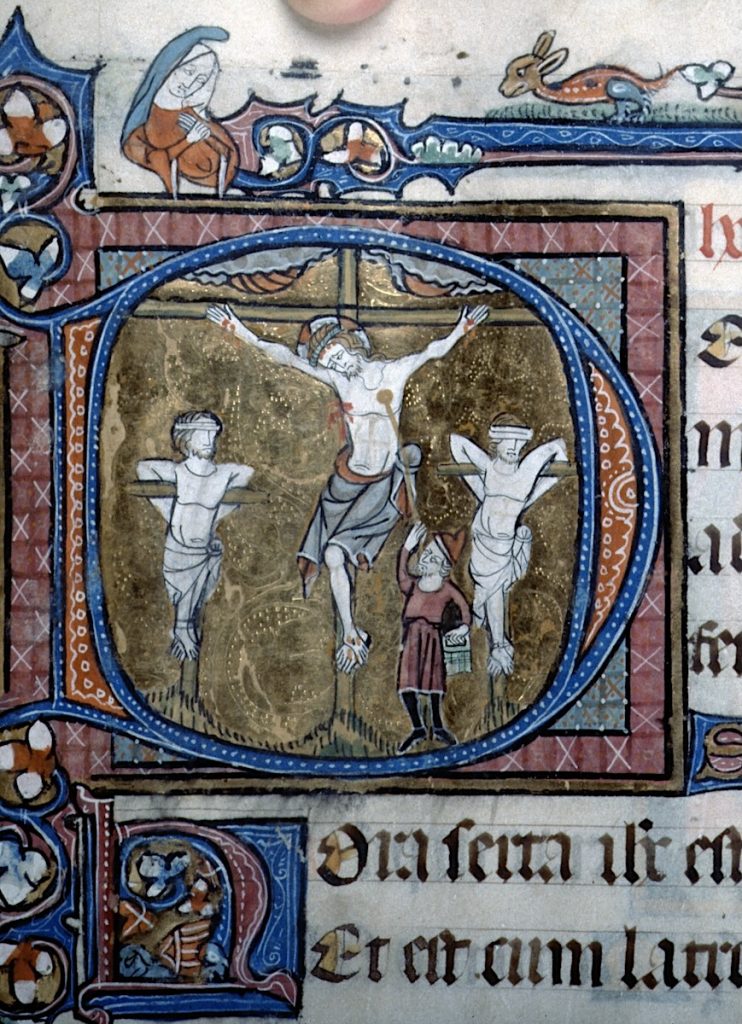
Have you made any great iconographic discoveries related to your research using the Index? Have you used the Index for teaching as well as for research?
I remember at least one visit, probably sometime between 1961 and 1964, when I was trying to determine the date during the Gothic period at which the crossed feet of the Crucified Christ changed position. I must have looked at hundreds of photos of every late thirteenth and fourteenth century Crucifixion at the Index. I can’t say that I came to any definitive conclusion but I certainly learned a lot about Crucifixion representations. I have found the online version of the Index invaluable, especially in connection with my latest book, Penned & Painted: The Art and Meaning of Books in Medieval and Renaissance Manuscripts (London: British Library, 2022), for which I did much of the research during Covid.
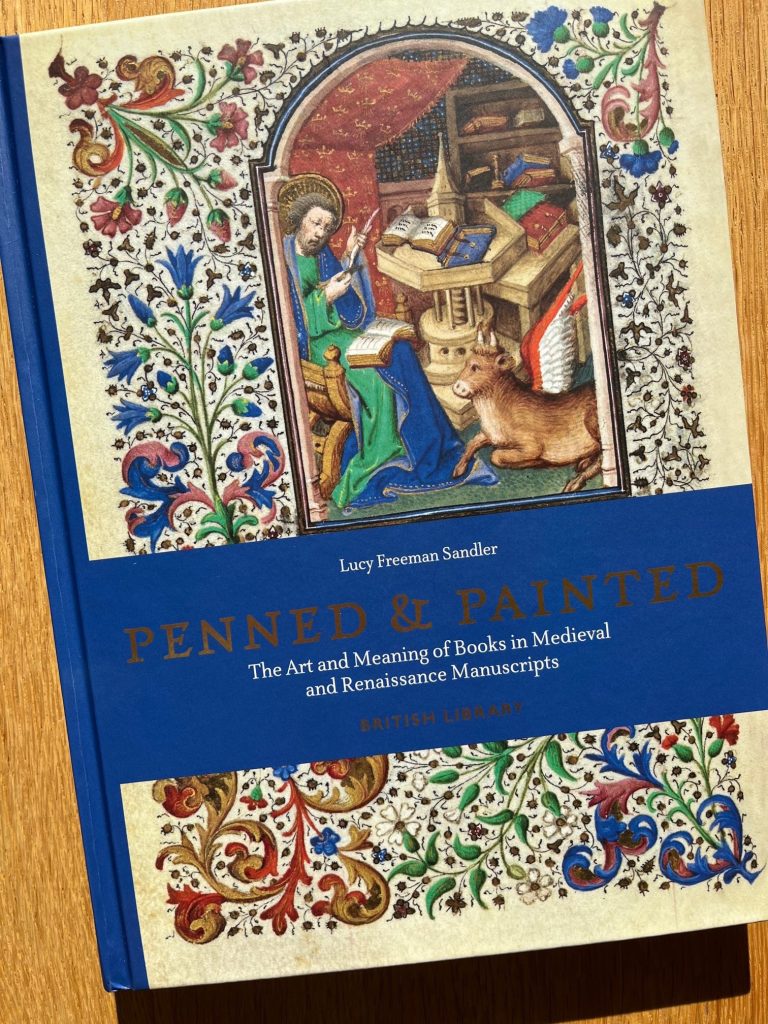
Have you attended or presented at an Index conference? Which conferences were particularly memorable or helpful to your work?
I have attended quite a few Index conferences and have spoken at several, including “The Weingarten Office Lectionary and Passionale in New York and St. Petersburg,” in Romanesque Art and Thought in the Twelfth Century in Honor of Walter Cahn (October 2006); “One Hundred and Fifty Years of Study of the Illuminated Book in England: The Bohun Manuscripts from the Nineteenth Century to the Present,” in Gothic Art & Thought in the Middle Ages: A Conference in Honor of Willibald Sauerländer (March 2009); “The Bohun Women and Manuscript Patronage in Fourteenth Century England,” in Medieval Patronage: Patronage, Power and Agency in Medieval Art (October 2012); and “Princeton Garrett MS 35 and Homeless English Gothic Manuscripts,” in Manuscripta Illuminata: Approaches to Understanding Medieval & Renaissance Manuscripts (October 2013). All these were subsequently published under the editorship of Colum Hourihane. I also contributed a tribute to John Plummer: “John Plummer: A Reminiscence,” in Between the Picture and the Word: Manuscript Studies from the Index of Christian Art, ed. C. Hourihane (University Park, PA, 2005), 9–11.
Do you have any observations about the evolution of the field of medieval iconographic studies over the last three decades?
As co-editor of the Index-based Studies in Iconography, from 2009–2015, I hoped to serve the mission of the journal, as it has continued to the present, to publish “innovative work on the meaning of images from the medieval world broadly construed.”
Thank you, Lucy! As the home for Studies in Iconography we’re committed to publishing innovative work in iconographic studies, and we’re grateful for your invaluable contributions to the Index over so many years.
The Index of Medieval Art is pleased to continue a series of blog posts that delve into the history of the organization through interviews with senior scholars in the field of art history. The “Guest Book Series” takes its name from the Index guest books, which have been signed by hundreds of art historians who have consulted the Index files over the past century. We’ve enjoyed reading their recollections, and we warmly thank Herbert Kessler, Professor Emeritus at Johns Hopkins University and Index friend, for his time and responses.
Please tell us a little about yourself and your work. Where did you study? What inspired you to become a medievalist?
After studying medieval art as an undergraduate at the University of Chicago, I completed the MFA and Ph.D. at Princeton. At UC, Margaret Rickert had inspired me to become a medievalist; she was also Rosalie B. Green’s Doktormutter, so Rosalie and I had a special bond from the start. I continued to use the Index at Dumbarton Oaks when I was a Fellow there in 1965–66 and then, again, when I returned to Princeton as a Fellow at the Institute for Advanced Study in 1969–70.
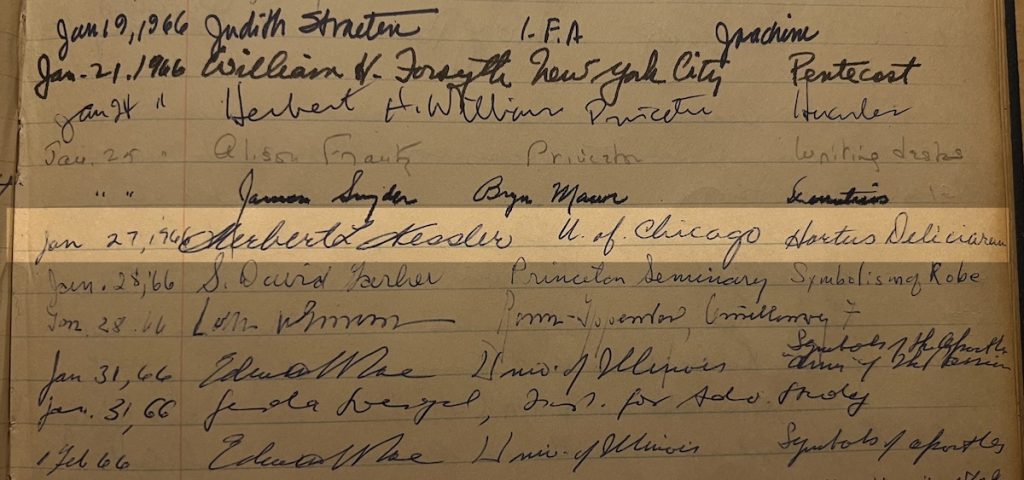
When was your first visit to the Index in Princeton? Where was the Index located? With whom did you work there? Do you remember anything especially interesting about your visit?
RBG1 oriented all new graduate students, so 1961. The Index was then in the Neo-Gothic Cram wing of the original McCormick Hall. Graduate students had keys and used it steadily, especially as a picture resource. The Index staff felt under-appreciated and with good cause: though RBG and Isa Ragusa were distinguished and consistently professional and helpful they knew that the faculty did not respect them as scholars. When I was being recruited to the University of Chicago faculty in 1965, the Dean offered to acquire a copy of the Index for me (because William Heckscher, who had been offered the position earlier, had asked for one), but nothing came of that. As computers were evolving in the 1980s, the Getty Center hired two young persons to recommend ways in which the Index might be digitized. Things did not go well, and I was sent (from Johns Hopkins) to reconcile the Index staff with the Getty interlopers. During the discussions, we all realized how the new technology might allow the Index to be modified in ways better to serve other disciplines, especially e.g. by refining types of musical instruments, botanical and zoological species, or agricultural implements.
Have you made any great iconographic discoveries related to your research using the Index? Have you used the Index for teaching as well as for research?
I have never used the Index for teaching and, frankly, cannot remember a single eureka moment while using it (except, of course, finding a picture I did not know).
Have you attended or presented at an Index conference? Which conferences were particularly memorable or helpful to your work?
I gave papers at Iconography at the Crossroads2 and Romanesque Art.3 Both were very important gatherings and publications.
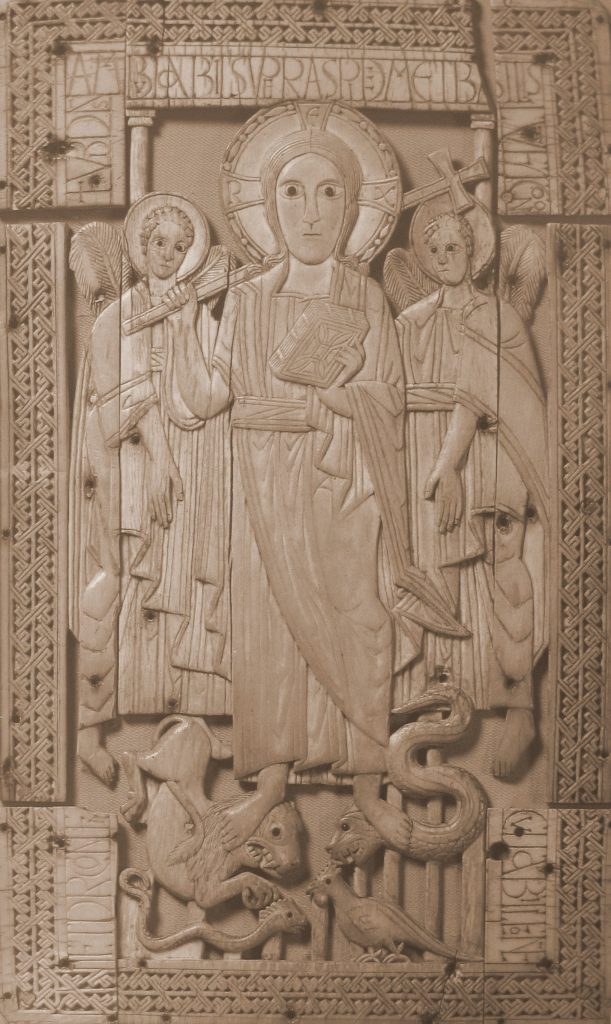
Do you have any observations about the evolution of the field of medieval iconographic studies over the last three decades?
As recently as twenty years ago, one of my own graduate students brushed away an argument with “That’s only iconography,” “Only” was the operative word there. In the wake of the material turn, decolonial turn, global turn, historiographic turn, experiential turn, the ornamental turn, . . . . , searching for texts that identify medieval subjects is no longer sufficient. And with the Patrologia Latina and other compendia online, it is not even fun. Simply to dismiss iconography, however, is ignorant. As I myself have argued at length in a recent essay, “the interweaving of text and image and the sensual pleasure of [medieval art’s] color and rich materials” was the essence of medieval art.4 Iconography is therefore destined to remain a fundamental instrument for studying it.
The Index of Medieval Art is pleased to continue a series of blog posts that delve into the history of the organization through interviews with senior scholars in the field of art history. The “Guest Book Series” takes its name from the Index guest books, which have been signed by scores of art historians who have consulted the Index files over the past century. We’ve enjoyed reading their recollections, and warmly thank Alison Stones, Professor Emerita, University of Pittsburgh, and Index friend for her time and responses.
Please tell us a little about yourself and your work. Where did you study? What inspired you to become a medievalist?
In the Fall of 1969, I emerged as a not-quite Ph.D. from the Courtauld Institute (that happened a year later in December 1970/January 1971) to begin what would turn out to be a life-long academic career in the United States. My academic background was in French and German literature, followed by a medieval art and architecture specialty at the Courtauld where I worked with the inimitable Christopher Hohler, and with David Ross at Birkbeck, with musicology from Ian Bent at King’s and Heraldry with Nick Norman at the Wallace Collection.
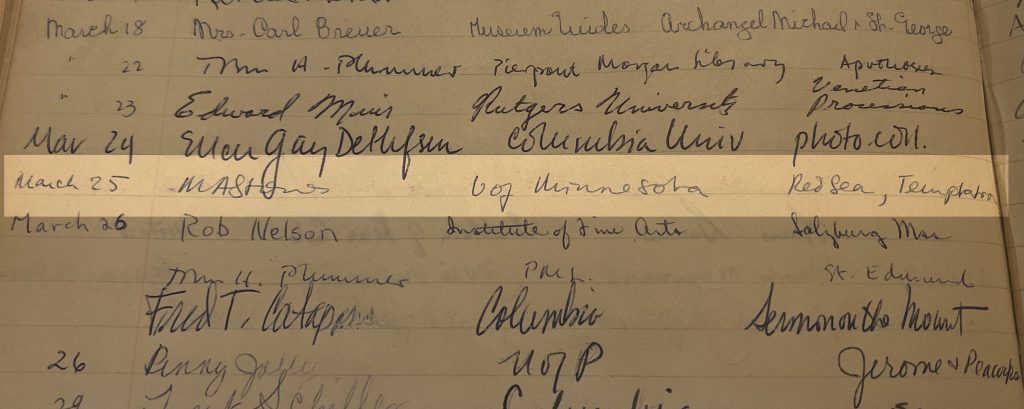
When was your first visit to the Index in Princeton? Where was the Index located? With whom did you work there? Do you remember anything especially interesting about your visit?
By 1969 I already had many friends in the US, notably Adelaide Bennett at the Index, Paula Gerson then at Fordham, James Marrow at Binghamton, and Bob Deshman at Toronto, Canada. All of them had worked alongside me in London, so the transition to the US was easy for me and all of them made me feel welcome there. The Index, under Rosalie Green, was among my first stopping places and continued over the years to be a haven for my research on French illuminated manuscripts, from the days of the invaluable old card system up to the new innovations of the 21st century. Adelaide and I would argue back and forth over the limitations and benefits of “Index-Speak” which invited us to hone our descriptive (and analytical) skills, and more recently it was a pleasure to encounter my former student Judith Golden among the ranks of the Index staff. One simply learned so much there!
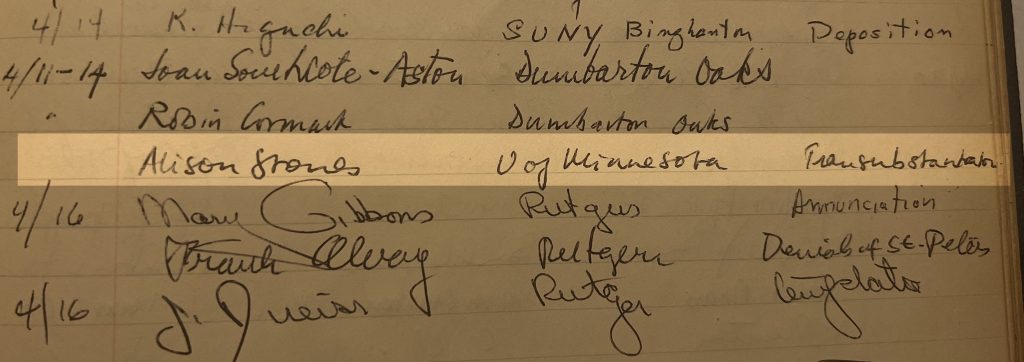
Under Colum Hourihane came the era of the Index conferences, not-to-be missed sessions of innovative research, captured with regularity in the impressive series of publications produced under his editorship. I was privileged to attend many of these conferences and to participate in Iconography at the Index: Celebrating Eighty Years of the Index of Christian Art (1997),[1] Between the Picture and the Word: The Book of Kings (Morgan 638) in Focus (2004),[2] as well as the festschrift volume Tributes to Adelaide Bennett Hagens: Manuscripts, Iconography, and the Late Medieval Viewer (2017).[3] Naturally, these essays all depended heavily on research conducted at the Index, where I must admit that my preference was still the old card system rather than the new, online version. Thankfully, the Index conferences are ongoing, and now available online with a livestream link. From the presentations to the interaction that follows, one learns so much!
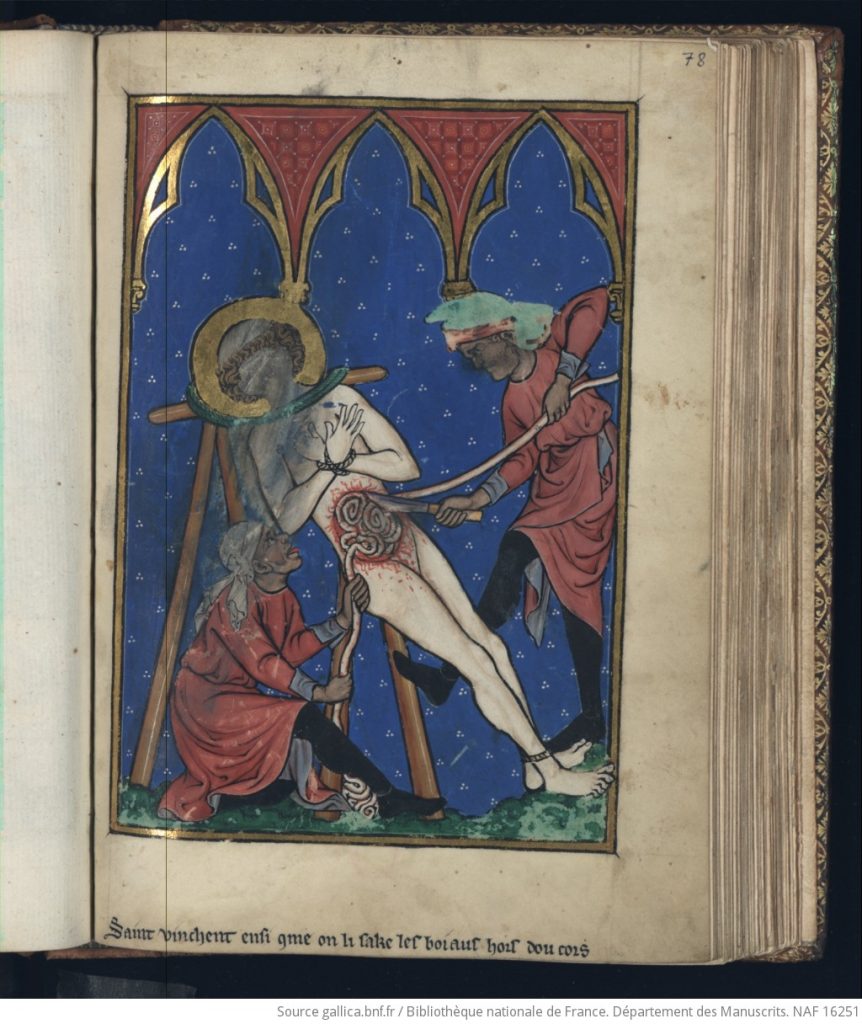
Do you have any observations about the evolution of the Index files and database over the last three decades? Where do you think Index work should go next?
As to future directions for the Index, I wish it could become a repository for the many online medieval databases (my own included) that risk becoming defunct once their creator retires. I appreciate the logistical issues and the problems of different software, but so much creative work is out there, and risks being lost. This in addition to the very valuable repository of information and images that make the Index such an indispensable tool for all medievalists. Long may it continue to flourish and many thanks for all I have learned there!
[1] Alison Stones, “Nipples, Entrails, Severed Heads and Skin; Devotional Images for Madame Marie,” in Image and Belief: Studies in Celebration of the Eightieth Anniversary of the Index of Christian Art, ed. Colum Hourihane (Princeton: Department of Art & Archaeology and Princeton University Press, 1999), 48–64.
[2] Alison Stones, “Questions of Style and Provenance in the Morgan Picture Bible,” in Between the Picture and the Word: The Book of Kings (Morgan 638) in Focus: A Colloquium in Honor of John Plummer, ed. Colum Hourihane (Princeton: Department of Art & Archaeology and Princeton University Press, 2004), 112–121.
[3] Alison Stones, “Tobit: A Recently Rediscovered Cutting from the Brussels-Rylands Bible,” in Tributes to Adelaide Bennett Hagens: Manuscripts, Iconography, and the Late Medieval Viewer, eds. Pamela A. Patton and Judith K. Golden (London: Harvey Miller Publishers, 2017), 335–353.
This blog post is the ninth in a series focusing on members of the Index staff. Today we introduce our student worker Brooke Jurgenson.
What year are you in your Princeton education? What are some of your favorite courses or subjects?
I am a second-year student in the Class of 2026. I intend to declare psychology as my major, but I also love philosophy, literature, and art history. My first year, I really enjoyed the Western Humanities Sequence, which traced the development of the Western intellectual tradition through such foundational works as Augustine’s Confessions and Mary Shelley’s Frankenstein. This semester, I am bridging my interests in psychology and philosophy with the course “The Psychological Foundations of the Mind” and branching out into linguistics by taking “On the Origins and Nature of the English Language.”
What do you do at the Index?
At the Index, I go through different iconographic categories, such as Virgin Mary, Dormition and Christ, Presentation, and add subjects to make the categories more comprehensive and accessible for researchers. For instance, I might add the subject tags “Joseph the Carpenter,” “Anna the Prophetess,” and “Dove” to all the records containing this imagery in scenes of the Presentation of Christ. I also collaborate with the Index research staff on refining the subject taxonomy and applying it more widely to records.
Aside from your experience at the Index, what was the most interesting job or internship you had?
In addition to fostering a love of medieval art at the Index, I have learned much about Princeton’s modern sculpture collection by serving as a Student Art Tour Guide with the Princeton University Art Museum. I lead small group tours around Princeton’s campus, highlighting the subtleties of Henry Moore’s bronze craftsmanship and Jacques Lipchitz’s mysterious abstractions.
What have you learned about medieval art since working for the Index? Has anything surprised you, or does anything stand out as extraordinary or curious about medieval art?
I absolutely love medieval art! Beautiful florals, ornate Latin scripts, gold pigments, and captivating renditions of the Virgin Mary and Christ Child regularly grace my screen. My appreciation for medieval art has grown immensely, and I have come to recognize just how rich and varied the subject area is.
I also never fail to come across the most mysterious and fun “hybrid creatures.” It is only here that I stumble across cats playing hurdy-gurdies and half-dragons slaying monsters. Medieval art truly expands your imagination.

Do you have a favorite work of art or favorite place you’ve visited?
This past summer, I took a somewhat impromptu trip to Berlin and visited the Bode Museum. I reveled in the amazing Byzantine collection there. Aside from medieval art, I enjoy Impressionism because of how it captures the ephemeral. My favorite work (as of right now) is Claude Monet’s “View of Vétheuil” painted in 1880, now in the collection of the Metropolitan Museum of Art in New York (Accession number 56.135.1).
What’s your favorite building or spot to sit on campus?
When it is warm outside, I love sitting on a bench in the garden behind Maclean House while reading. It is the perfect place to listen to the birds sing and feel the serenity of nature. I also love gazing at the stained glass windows of the Princeton University Chapel, watching the colorful dances of light play out in the sacred space.
Coffee or tea?
I avidly drink both coffee and tea, but I am a tea lover by heart. A steaming cup of freshly brewed green tea is all I need to be content.
This blog post is the eighth in a series focusing on members of the Index staff. Today we introduce our student worker Tinney Mak.
What year are you in your Princeton education? What are some of your favorite courses or subjects?
I’m a junior right now studying computer science. Some of my favorite classes that I’ve taken are “Everyday Writing in Medieval Egypt” and one where I learned how to read hieroglyphics (fulfilled my childhood dream).
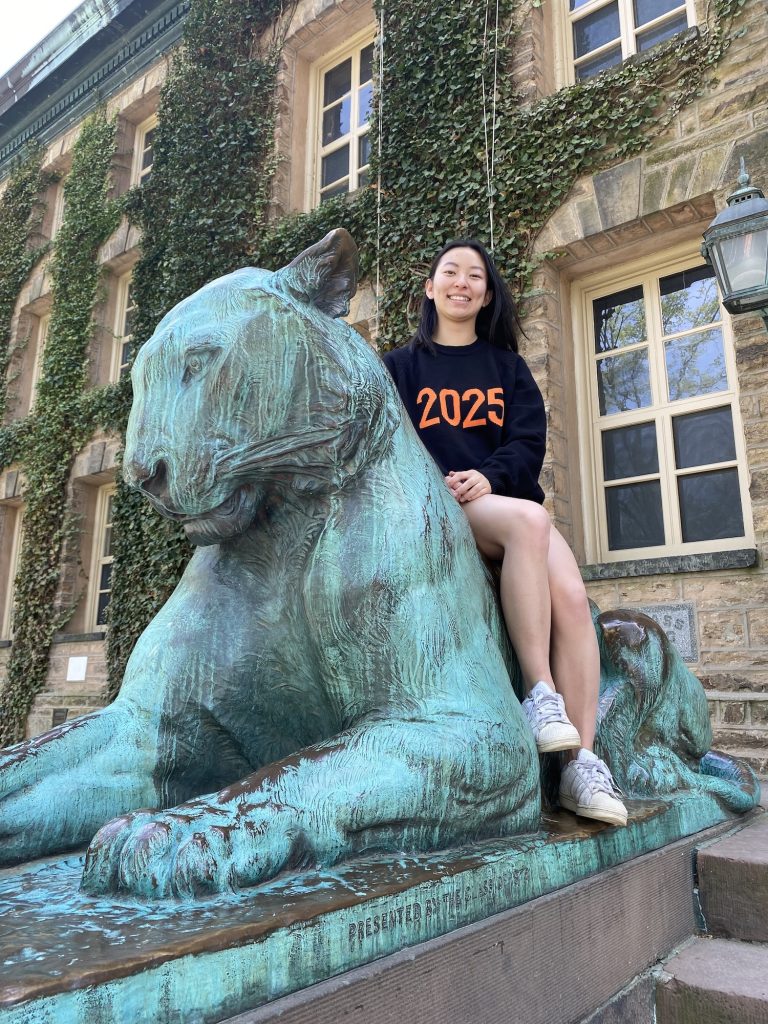
What do you do at the Index?
I mostly deal with tagging subjects on works of art to make sure that people doing research have an easier time finding the materials they want.
Aside from your experience at the Index, what was the most interesting job or internship you have had?
The most interesting internship I’ve had was last summer where I spent eight weeks in Malaysia analyzing a diabetes dataset. I learned a lot from the people I worked with and also really enjoyed exploring the country.
What have you learned about medieval art since working for the Index? Has anything surprised you or does anything stand out as extraordinary or curious about medieval art?
Since working for the Index, I’ve been continually impressed by the amount of skill and knowledge it must take to decipher what’s going on in a piece of art, especially since objects often get extremely worn down through time. It’s always interesting learning about the vast number of different work of art types that I didn’t even know existed (current favorite: croziers!).
Do you have a favorite work of art or favorite place you’ve visited?
My favorite place that I’ve visited is probably Budapest. I remember taking the ferry down the Danube and being in awe of the Liberty Monument on the hill.
What’s your favorite building or spot to sit on campus?
The Mathey common room because of the comfy couches, high ceilings, and occasional piano playing.
Coffee or tea?
Tea! Specifically, a nice cup of Earl Grey.
This blog post is the seventh in a series focusing on members of the Index staff. Today we introduce Jon Niola.
What is your role at the Index?
I am the Information Technology Manager here at the Index. I manage the day-to-day technology needs of the Index. That includes everything from managing virtual machines on the cloud to deploying new computers for staff or writing code to enhance the accessibility of our web applications.
Before working for the Index, what was the most interesting job you had?
In the late 1990s I worked at a technology startup in New York City trying to improve Internet search. We used algorithms to make a search more appropriate to the context. For example, if you searched for the keyword “jaguar,” were you searching for the automobile or the animal? Our algorithms used recent searches and site visits to try and narrow the scope.
When you’re not working at the Index, what do you like to do in your spare time?
If the weather cooperates, I absolutely love to hike, and I spend quite a bit of time on the trail, getting some exercise and fresh air and enjoying the tranquility.
Do you have a favorite work of art or favorite place you’ve visited?
Sainte-Chapelle in Paris. I had always planned on visiting it when I went to Paris, but to me it was just a bucket list, “must do” item. I never expected it to be so incredible in person. I had a few thousand dollars of camera gear with me, and no photo I took does justice to the beauty of it, especially the upper chapel with the incredible stained glass.
What’s your favorite building or spot to sit on campus?
This is a tough call. I can’t choose between Nassau Hall and the university chapel.
The chapel is beautiful, and at certain times of the day when the angle of the sun is right, you get these beautiful colors on the stone as the sun filters through the stained glass.
The history buff in me appreciates Nassau Hall. The fact that it once served as the capitol of the United States is fascinating to me. We are blessed with a lot of great local history.
Coffee or tea?
Yes. I often drink coffee in the morning, but I do love a good tea.
This blog post is the sixth in a series focusing on members of the Index staff. Today we introduce Fiona Barrett.
What is your role at the Index?
My role at the Index is that of Office Administrator/Coordinator. The exciting part of my job, which is not at all traditional (in the administrative sense), is that I am able to assist where/when needed in the Index database and library. If you’ve seen the #IndexHumpDay posts on social media, you’ll see my weekly interaction with iconography—a variety of camels depicted across media, geographies, and time periods.
Before working for the Index, what was the most interesting job you had?
Before working for the Index, I worked in market research for twenty-five years, which—while interesting and challenging at times—in no way compares to my experience here at the Index. I’m very grateful to be exposed to all of this art history, and lucky enough to have colleagues who take the time to explain things to me when needed.
When you’re not working at the Index, what do you like to do in your spare time?
Hmm … a few of my favorite things: cooking, eating, entertaining, reading, gardening, traveling, listening to music (especially my husband’s 😊), and I love spending time with family and friends; they are one and the same.
Do you have a favorite work of art or favorite place you’ve visited?
I spent part of my childhood growing up in Ireland, but I truly didn’t appreciate the country and the history until I was in my early thirties. I was lucky enough to travel back a few times, with my father and then with my son. I would go again in a heartbeat! This year I am planning to travel to Italy, which has been on my bucket list for quite some time.
What do you like best about being back on campus in person?
Now that we’re back in person, and I am working with colleagues face-to-face, it’s great to be able to have our in-person conferences and workshops once again. This past conference—“Looking at Language” in November 2022—brought together over fifty attendees, and seven of the eight speakers were able to present in person.
Coffee or tea?
YES, PLEASE!
This blog post is the fifth in a series focusing on members of the Index staff. Today we introduce Pamela Patton.
What is your background and specialization?
I’m a medievalist who studies the visual culture of the Iberian Peninsula, a focus that began at Tufts University when my advisor Madeline Caviness pointed me toward the Pamplona Bibles as a research topic. I was fascinated, and still am, by the complexity of medieval Iberian culture and its historiography—the questions are constantly evolving. The decision served me well: after doing grad degrees at Williams College and Boston University, I was offered a fellowship at Southern Methodist University in Dallas, which then evolved into a split curatorial and faculty position in “Spanish Art.” Although I shifted out of curatorial work after tenure, as a professor at SMU I was able to develop several courses on medieval Iberia as well as other aspects of the Middle Ages. Since coming to the Index in 2015, I’ve continued to research and occasionally teach medieval Iberian things, and I’m always happy to pitch in on cataloging works of art from Spain for the database. After 30+ years in the field, I do occasionally wonder if I should wander into some other part of the world, but then some great new Iberian question turns up, and back I go.
What research projects are you working on currently?
I’ve just wrapped up a project on how skin color and stereotype were used in thirteenth- and fourteenth-century Iberia to signal racial, social, and cultural difference, and that’s inspired me to think further about the role of improvisation generally in Gothic manuscript illumination, specifically in the illustrated manuscripts of the Cantigas de Santa María, which were made for Alfonso X of Castile in the late thirteenth century. Illustrating the four hundred songs that were to be included in those two manuscripts must have been a massive task, and the artists met the challenge with some highly inventive iconography—giant silkworms, flying chairs, dancing pork chops, and the like. They must have had considerable latitude, in addition to a wonderful imagination!
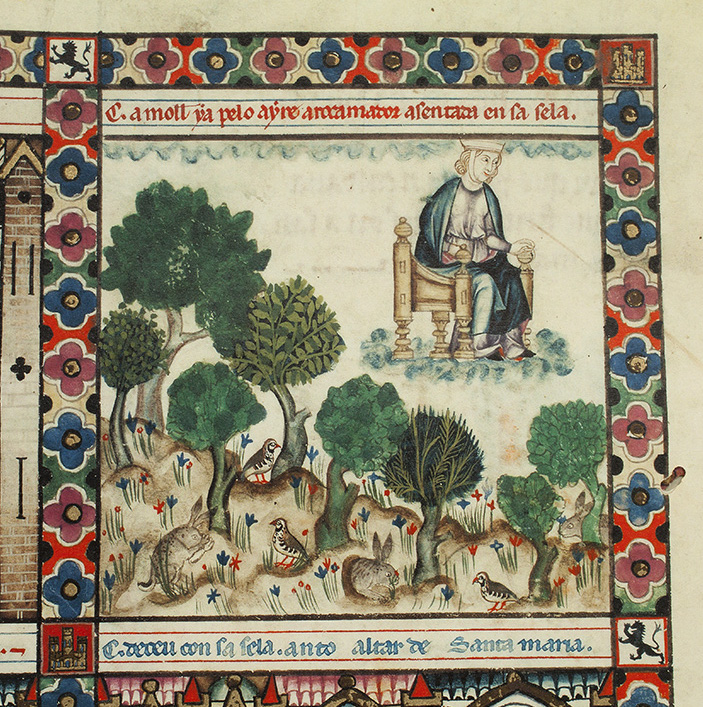
What do you like best about working at Princeton?
Princeton does things for real. Very few universities so effectively hold teaching and research at their core, not to mention committing the resources that help them happen. As Index director, I especially appreciate the openness to new ideas, the support for scholarly initiatives, and the extraordinary research resources. These things don’t happen by themselves; they take investment at the highest level. On a more personal note, I’m grateful every day that when I go to work I have the opportunity to hear and share ideas with so many bright, thoughtful people, both in the Index and throughout campus, and in such a beautiful place. It’s a fine reason to get up in the morning.
What travel experience played a role in your becoming an art historian?
My mother had always wanted to travel, and when I was a child she and my father twice managed to put aside enough money to take the whole family to Europe. Remember Arthur Frommer’s Europe on $10 a Day? My mother really did that. I loved visiting all the art museums and historic sites, but I think reading The Hobbit on the train between cathedral towns in England was probably what made me a medievalist. The line between history and fantasy obviously was very blurry for me then, but somehow I became absolutely certain I wanted to learn more about this stuff. Corny, okay, but give me a break—I was eleven.
What do you like best about being back on campus in person?
People and books. I really missed the easy discourse that comes with sharing a coffee, talking over a research question, or listening to Q&A after a lecture. Ideas flow so much more freely when you’re in person and the moment has your full, active attention. And there is nothing more inspiring than walking into the library stacks to find the physical book you need: the excitement of spotting and opening it; the anticipation of what you’ll find in its pages; the serendipity of seeing what else is on that shelf. And the lights! I really like how the lights in Firestone brighten gradually when you walk into an individual aisle. It’s as if the light bulb that’s about to go off in your head is already going off all around you.
Coffee or tea?
Yes, please, all of it. I would drink coffee all day if I could, especially if it’s the cortados that I got hooked on during dissertation research in Spain. But to spare my co-workers a jittery colleague, in the afternoon I usually segue into tea, ideally a nice green jasmine.
This blog post is the fourth in a series focusing on members of the Index staff. Today we introduce Catherine Fernandez.
What is your background and specialization?
As a medieval art historian, I owe so much of my intellectual formation to the universities where I earned my degrees. Can I use this space to give a shout-out to all the medievalists—both past and present—at Florida State University and Emory University? My academic journey, so to speak, began at FSU with two BAs, one in English Literature and one in Art History. I earned my PhD in Art History at Emory and then headed up the east coast to join the Index research staff immediately after graduation. My current research interests center on medieval treasuries and French Romanesque art, but I am happy to get my thousand-year medieval “fix” through various Index projects. Based on cataloguing or classroom instruction needs, I might be simultaneously working on an Ottonian manuscript, a late-antique sarcophagus, or Gothic archivolts; it’s an embarrassment of riches.
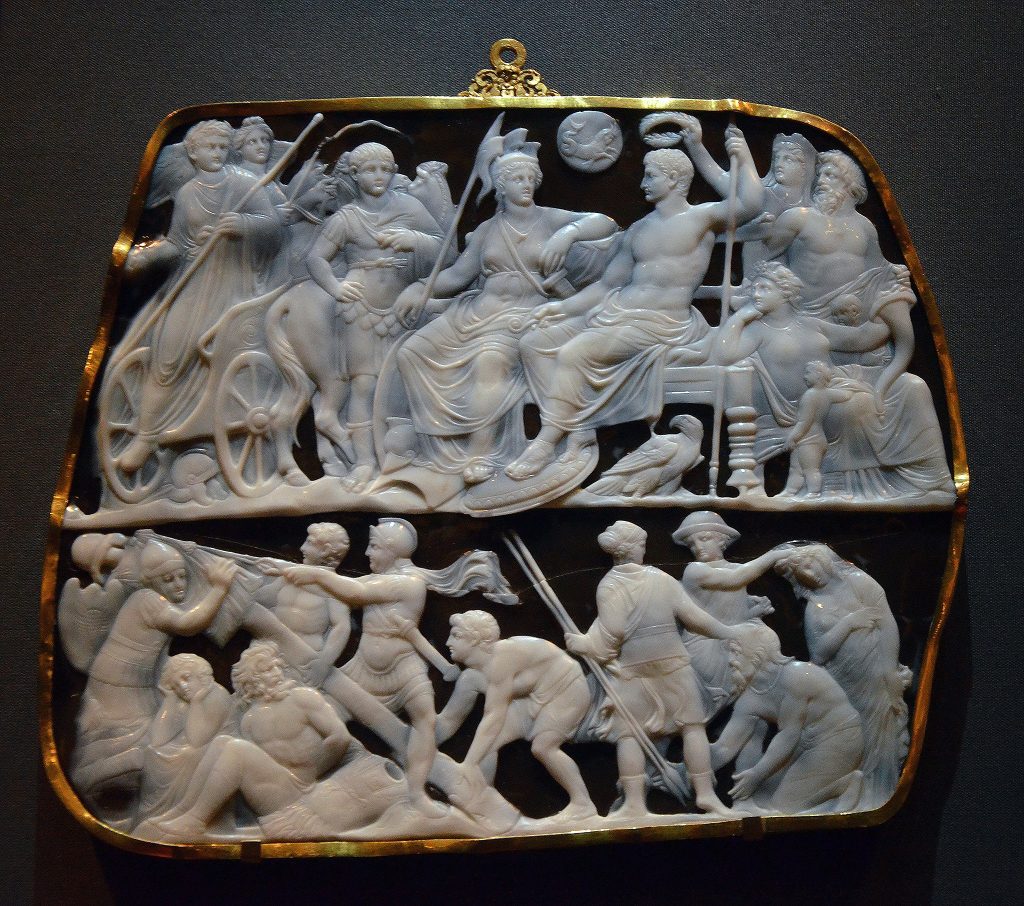
What research projects are you working on currently?
At the Index, I happily embrace a wide range of topics, but I am particularly thrilled to have worked with our IT guru Jon Niola in the development of a field within individual records that “maps” iconographic programs within medieval buildings and other structures. By highlighting the placement of in-situ works of art, the “Location in Structure” field can only amplify our understanding of medieval iconography’s spatial dimension. With regard to my own research, I am currently working on my book project, entitled Charlemagne’s Pectoral: The Presence of Carolingian Memory at Saint-Sernin of Toulouse. This monograph seeks to reintegrate a group of extraordinary treasury objects associated with the emperor Charlemagne within the liturgical space of the famous Romanesque shrine.
What do you like best about working at Princeton?
It remains an absolute pleasure to work with so many wonderful medievalists—both members of the local community and visiting scholars—and participate in the “Life of the Mind” on campus.
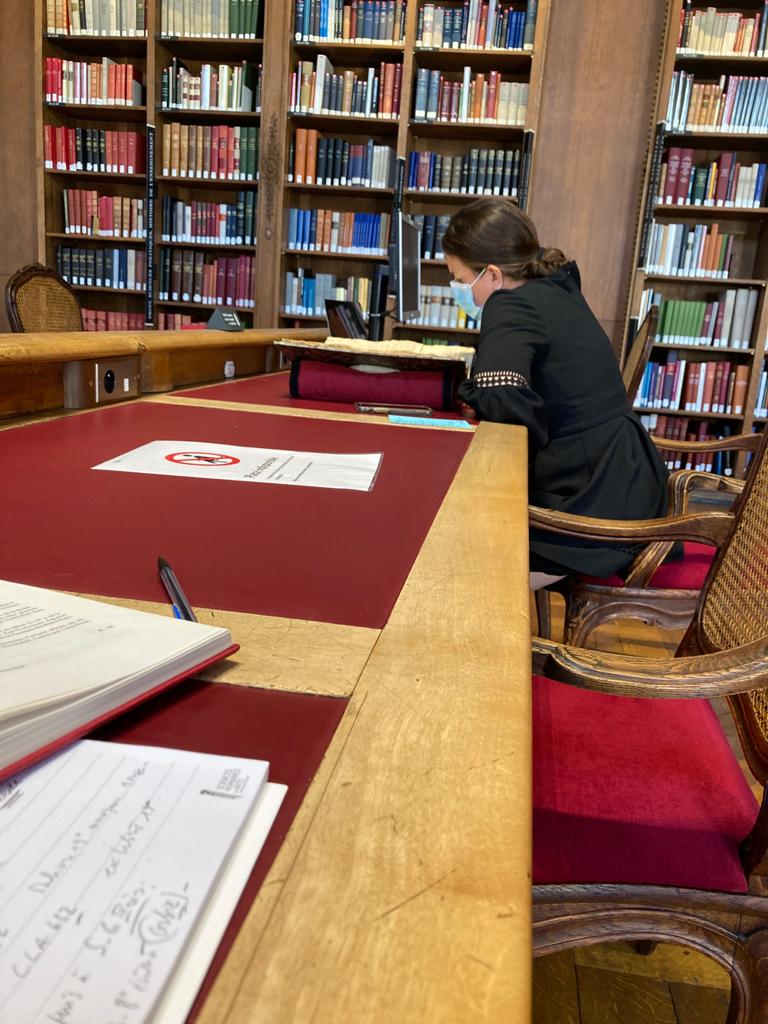
What travel experience played a role in your becoming an art historian?
I consider myself fortunate to have had an upbringing that included extensive global travel. Over the course of my childhood, my family visited countless monuments, museums, galleries, and archaeological sites around the world, and any number of these places could have infected me with the “art history bug.” But humor me, if you will, when I give credit to the Metropolitan Museum of Art and E.L. Konigsburg’s novel From the Mixed-Up Files of Mrs. Basil E. Frankweiler. I mean, what art historian hasn’t fantasized about hiding out at the Met like the novel’s two child protagonists?
What do you like best about being back on campus in person?
Close access to actual libraries and actual human beings, as I am rather fond of both.
Coffee or Tea?
Red Bull. Blueberry flavored. What? Was I supposed to wax poetic about some kind of refined oolong?
This post is the third in a series focusing on members of the Index staff. Today we introduce Henry D. Schilb.
What is your background and specialization?
Maybe I ought to have been a musicologist. Among other things that I almost got away with in my life, I once wrote, produced, and hosted a radio series about twentieth-century music. That was during the fifteen years that I worked as an announcer at a couple different public radio stations (among many other brutally low-paying jobs I’ve held down, often two or more at a time). In those heady days, I sneaked works by Ruth Crawford Seeger, Harry Partch, Iannis Xenakis, György Ligeti, Pierre Boulez, George Walker, and even James Tenney onto the airwaves, no mean feat at that time. Oh, how invigorating were the listener complaints! No composer younger than Brahms was safe from the acrid contempt of the average public radio listener, but I still especially cherish being told by one listener that I myself was what was wrong with the world—and this was in the early ’90s, so the listener who lodged that complaint had no idea what was coming!
Although I always fear that too many minds nestled between incurious ears remain impervious to the pleasures of new music, or simply unaware of them, let me hope that there are some—among those who have survived more than twenty percent of the twenty-first century with a spirit of adventure intact—who will forgive me for seizing this moment to direct their attention to the music of George Lewis, Chaya Czernowin, Unsuk Chin, Rebecca Saunders, and Olga Neuwirth. I could go on, but that’s a good start. You can thank me later.
But, for some reason, I’m an art historian now. I earned my PhD at Indiana University in 2009, and I specialize in late-Byzantine art, and embroidered liturgical textiles in particular. Yeah, I’m a real hoot at neighborhood parties.
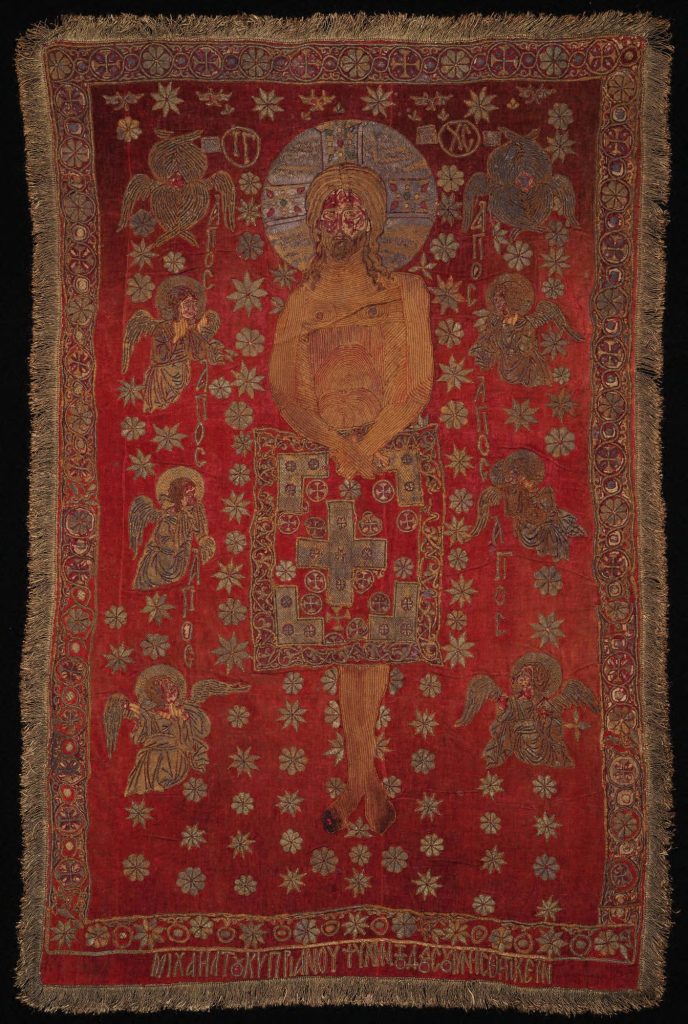
What research projects are you working on currently?
Quite by mistake, I find myself the resident geographer at the Index of Medieval Art. Maybe I spend too many of my waking hours thinking about how to deal with location information in our database, but I rather like that part of my job. In my own research, however, I still focus on embroidered veils. Back in November, I presented a paper at the Index’s conference on “Fragments, Art, and Meaning in the Middle Ages.” I discussed, among other objects, a textile in the Princeton University Art Museum. I’m also optimistically planning a trip to Canterbury Cathedral to visit a post-Byzantine textile that has a very strange history indeed. Remind me to tell you about it sometime.
What do you like best about working at Princeton?
Even after ten years at Princeton, I still think it’s pretty cool to work at the same university where Roger Sessions taught for many years. (Yes, he’s another composer whose music I love.) Also, I like to go for a long run after work, down to the towpath, along the canal, and then back up through campus, through the majestic arches and under the leafy canopy. Like me, the campus is at its best in October.
What do you like best about being back on campus in person?
Although I thrived while working from home during the pandemic, and my productivity really went through the roof, I suppose that the return to campus back in September was inevitable. As for what I like best about The Return, I’ll simply refer you to my comments above regarding running through campus. I have to say, however, that the experience now can be rather spoiled by all the construction…and those danged scooters.
What travel experience played a role in your becoming an art historian?
My honest answer to this question is boring. It’s also probably cheating. It was not a literal journey, you see, but a slide show in the first art history course that I took in college in 1984. So, the first time I looked closely at a picture of Hagia Sophia in Istanbul—that’s what’s really to blame for my being at the Index of Medieval Art today.
But I’ve been traveling all my life. I said my first word at Expo 67 in Montreal. Well, two words, technically, I guess. What I said was “egg roll.” And I meant it.
Of course, destiny-shaping travel needn’t take you any great distance. When I was a kid in Lockport, Illinois in the ’70s, every trip to the Field Museum in Chicago felt like a profoundly life-altering experience. I still keep a pair of Mold-A-Rama dinosaurs in my office at the Index.
Mold-A-Rama? Google it.
When I lived in England in the late ’80s, I used to love to take a drive to Little Gidding, just to hang out, wander around, listen to the wind, ponder the landscape, and to think about poetry, music, history, and…just to think. I was always surprised that I never encountered another visitor there. Every trip to Little Gidding was very different from the Bloomsday I spent in Dublin, which must have been in ’89. You couldn’t sneeze without jostling some other tweedy nerd trying to wash down a gorgonzola sandwich with a glass of burgundy.
On research trips, I still always try to do something just for fun, something that has nothing to do with my research—even nothing to do with art history—but everything to do with who I am, so one of my favorite travel experiences was a visit in 2005 to Sighișoara, Romania, the birthplace of Vlad the Impaler. Good times!
Coffee or tea?
Yes, please.